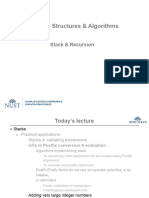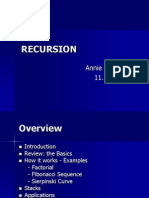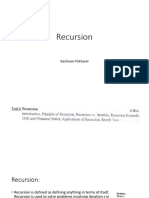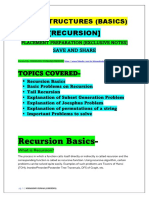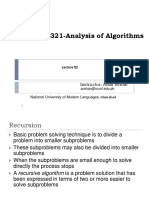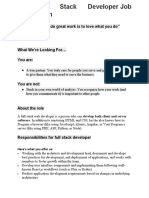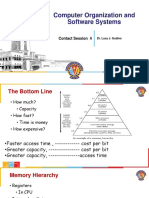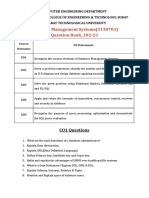0% found this document useful (0 votes)
93 views13 pagesRecursion Basics for Students
The document discusses recursion, an algorithmic technique where a function calls itself. It provides examples of recursive functions, explains how recursion works using a stack, and contrasts recursion with iteration. It also gives guidelines for creating recursive algorithms and provides an example of a recursive solution to the Fibonacci sequence problem.
Uploaded by
Ash BeeCopyright
© © All Rights Reserved
We take content rights seriously. If you suspect this is your content, claim it here.
Available Formats
Download as PPTX, PDF, TXT or read online on Scribd
0% found this document useful (0 votes)
93 views13 pagesRecursion Basics for Students
The document discusses recursion, an algorithmic technique where a function calls itself. It provides examples of recursive functions, explains how recursion works using a stack, and contrasts recursion with iteration. It also gives guidelines for creating recursive algorithms and provides an example of a recursive solution to the Fibonacci sequence problem.
Uploaded by
Ash BeeCopyright
© © All Rights Reserved
We take content rights seriously. If you suspect this is your content, claim it here.
Available Formats
Download as PPTX, PDF, TXT or read online on Scribd
/ 13










